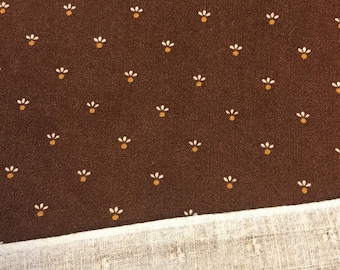

This is why it is often considered ideal for high-traffic items like bags and aprons that are used in lots of potentially messy situations every single day. It’s also more durable than many other fabrics for daily use. Therefore can be useful in any project and any colour scheme. It’s also very popular because of the untreated state - this means it can be tie-dyed, printed, or changed in many different ways.


So it’s still great for any home sewers to use either for their final product or a mock-up design. This is in part because it comes straight off the loom and starts from just a few pounds per metre. When used for most of these projects, it has been dyed or printed on to create colourful, inspiring designs.īenefits of calico fabric in garment designĬalico has many benefits, including the fact that it is so cheap. Although it may not be as heavyweight as something like denim, it can cope with a large amount of daily wear and tear. It can also be used for making soft furnishings, curtains, bags, aprons and more. These dummy garments are known as ‘toiles’. It is a cheap material and, therefore, can be used to show a mock-up of a proposed garment before it is made using the final fabric. Other fabrics created in this way include:Ĭalico is incredibly versatile, and one of its most common uses is in garment design. It is also referred to as a loom-state fabric due to this process. Then, in the 1800s, cotton was imported from the US, and machinery was created to weave fabrics together quickly and, ultimately, cheaply.Ĭalico material is made on a loom and is often known as half-processed cotton because it does not go through any other finishing or treatment process after it leaves the loom. While this was primarily unsuccessful, the British market flourished and started weaving and printing cotton on home soil. As a result, companies hoping to protect the textile market tried to influence law changes and bans on calico materials. The fabric was first created in the southwestern state of India called Kerala and is named after the city Kozhikode, also known in English as Calicut.ĭuring the 18th century, English traders imported calico fabric to the UK and this caused tension with the established wool trade in North England. However, its discovery by Europeans in the 17th and 18th century brought this versatile fabric to the masses. Origins of calico fabricĬalico fabric dates back centuries, with designs originating in the 11th and 12th centuries. In addition, you would be forgiven for calling it canvas, as it shares similar characteristics. For example, it is stronger than muslin but less robust than denim.

The fabric’s texture perfectly balances coarse and soft materials. This gives it a naturally occurring creamy grey colour. So let’s take a closer look at calico and why it’s a top fabric choice.Ĭalico material comes straight from the loom, and it is 100% cotton that has not been dyed or bleached. However, it features in more places than you might think. What Are The Uses Of Calico Fabric ?Ĭalico has a long history of everyday practical uses including upholstery, quilting, craft projects, kids projects, bag making, dressmaking, curtain making, pillowcases, duvets, and any items that are required to be hard-wearing with longevity.Calico fabric is a very useful material, but many don’t know much about it and its use. To avoid the measurements being affected by this, we would suggest prewashing your fabric before you start getting to work with it. For most weights, we would recommend allowing for initial shrinkage during the first wash, when creating your garment or item. Due to being untreated, Calico is an ideal fabric for projects that require dyeing, printing, and for general experimenting on! Its natural properties also make this textile suitable to be used with other natural fabrics as part of larger projects such as quilts, throws, tapestries, rugs, and wall hangings.


 0 kommentar(er)
0 kommentar(er)
